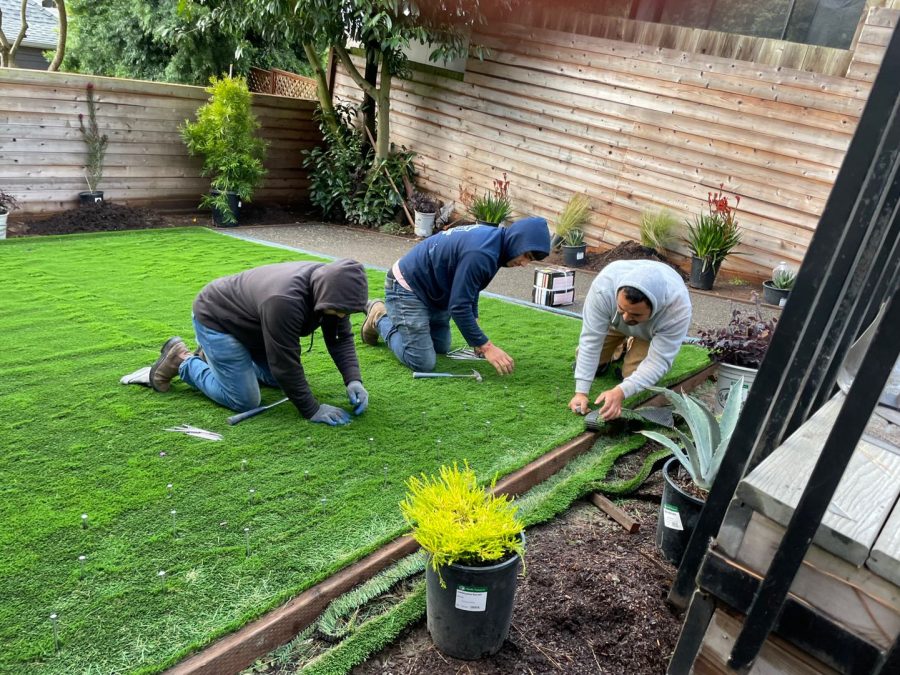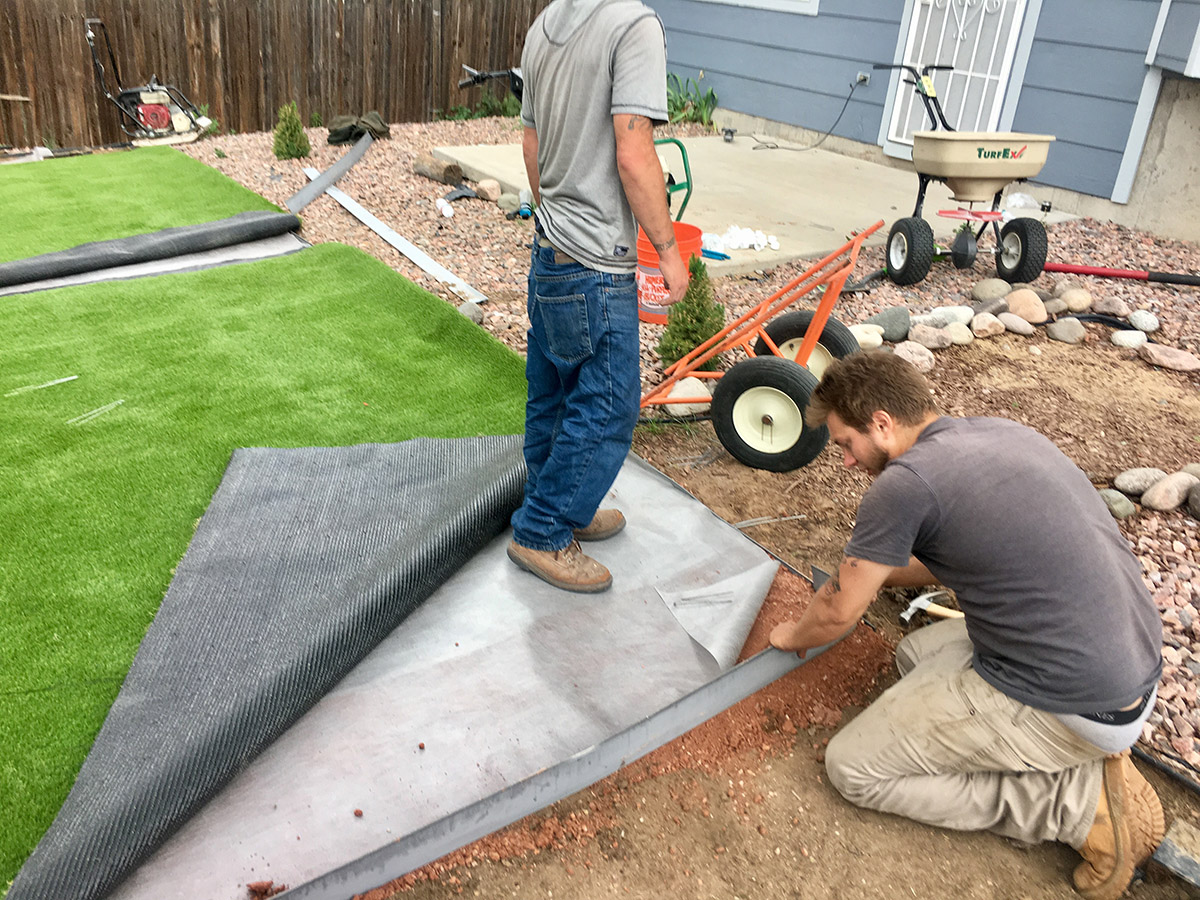Tailored Turf Installation Phoenix AZ for Residences, Companies, and Recreational Spaces
Tailored Turf Installation Phoenix AZ for Residences, Companies, and Recreational Spaces
Blog Article
Explore the Environmental Benefits of Opting for Artificial Turf Solutions
The fostering of synthetic lawn services provides a compelling chance to address pushing ecological obstacles. By considerably decreasing water use and lessening the application of hazardous chemicals, these alternatives not only advertise sustainable landscape design however additionally secure regional ecological communities.
Water Preservation Perks
One of the most considerable advantages of fabricated turf is its capability to save water. In contrast, man-made turf does not need watering, substantially reducing the total demand for water resources.
By removing the demand for normal watering, artificial grass adds to sustainable landscape techniques and helps mitigate the environmental impact of excessive water consumption. In addition, the preservation of water prolongs to the reduction of runoff, which can cause dirt disintegration and river contamination.
Furthermore, the installment of artificial turf permits property owners and towns to allocate water sources extra efficiently, concentrating on necessary uses such as alcohol consumption water and agriculture. The change in the direction of man-made lawn not just promotes responsible water usage yet also aligns with more comprehensive ecological objectives focused on protecting natural resources.
As communities increasingly focus on sustainability, the water preservation benefits of synthetic grass provide a compelling case for its adoption in commercial and residential landscaping tasks.
Reduced Chemical Usage
The transition to synthetic lawn significantly lowers the reliance on chemical therapies generally used in natural yard maintenance. Standard lawn monitoring typically involves the application of herbicides, plant foods, and chemicals to promote development and control pests. These chemicals can position dangers to human health, regional wildlife, and the environment, contributing to dirt and water contamination.
In comparison, artificial grass removes the demand for these unsafe materials. By reducing the launch of artificial compounds into the community, fabricated lawn promotes healthier soil and water systems.
Furthermore, the absence of chemical drainage connected with fabricated turf installations helps safeguard regional rivers from air pollution, supporting aquatic life and preserving biodiversity. Turf installation phoenix az. As communities increasingly focus on lasting techniques, going with synthetic grass offers a practical solution that aligns with ecological conservation goals. Through this shift, building owners can enjoy rich eco-friendly rooms without endangering eco-friendly health, paving the way for an extra lasting future
Reduced Carbon Impact

Additionally, the installment of artificial turf can lead to considerable water preservation. All-natural grass call for considerable amounts of water for irrigation, which not just contributes to the carbon impact associated with water extraction and treatment however likewise stress regional water sources. On the other hand, synthetic grass requires minimal upkeep, requiring no watering, thus considerably decreasing water usage and its connected energy costs.
Additionally, the longevity of synthetic grass adds to its lower carbon influence. With a lifespan of up to 15 years or even more, the demand for constant substitutes is reduced, leading to less waste and lower power intake in manufacturing and dealing with conventional grass choices. On the whole, synthetic grass provides a sustainable alternative for eco mindful landscaping.
Habitat Preservation
Habitat conservation is an essential factor to consider in the dispute over landscaping selections, especially when comparing synthetic turf to natural grass. All-natural Visit This Link lawn lawns typically require extensive upkeep, consisting of the usage of plant foods, herbicides, and pesticides, which can adversely impact regional ecological communities. These chemicals can seep into the dirt and rivers, hurting indigenous flora and animals and disrupting neighborhood habitats.
Synthetic grass removes the requirement for hazardous chemicals, consequently safeguarding neighboring wildlife my company and preserving the honesty of surrounding environments. The setup of synthetic turf can lead to the conversion of former yard locations into even more biodiverse landscapes, such as pollinator gardens or native plant areas, which can sustain local wild animals.
Inevitably, the transition to synthetic grass not only saves water and minimizes upkeep efforts but additionally promotes an extra unified connection in between human activities and the natural surroundings, promoting environment conservation while doing so.
Long-Term Sustainability
Lasting sustainability is an important variable in reviewing the benefits of fabricated lawn over conventional lawn lawns. Among one of the most considerable benefits of artificial turf is its resilience; it can last up to 15-20 years with very little upkeep, whereas natural yard needs constant reseeding and replacement. This durability minimizes the need for constant sources, such as water, plant foods, and chemicals, which are necessary for maintaining a healthy and balanced grass lawn.
Furthermore, artificial grass adds to a reduction in carbon emissions related to lawn care tools. Conventional yards often require gas-powered lawn mowers, leaners, and blowers, all of which contribute to air contamination. Phoenix turf companies. In contrast, man-made lawn removes the requirement for such tools, promoting a cleaner atmosphere
In addition, the manufacturing of synthetic turf increasingly utilizes recycled materials, enhancing its sustainability account. As suppliers adopt green techniques, the ecological impact of synthetic turf proceeds to decrease.

Conclusion
The adoption of synthetic grass solutions offers considerable ecological advantages, consisting of significant water preservation, decreased dependence on dangerous chemicals, and a reduced carbon footprint. Artificial lawn aids in protecting all-natural habitats by decreasing land disturbance and advertising lasting sustainability via the use of long lasting materials. Collectively, these aspects emphasize the capacity of synthetic grass to contribute favorably to environmental wellness and use a sensible alternative to traditional landscaping methods in an increasingly resource-conscious world.
In contrast, man-made grass does not need watering, significantly decreasing the total demand for water sources. By decreasing the release of artificial substances right into the ecosystem, fabricated turf promotes healthier soil and water systems.
Additionally, the installment of synthetic lawn can result in substantial water conservation. In contrast, artificial lawn needs marginal upkeep, needing no watering, thereby dramatically minimizing water usage and its connected energy costs.

Report this page